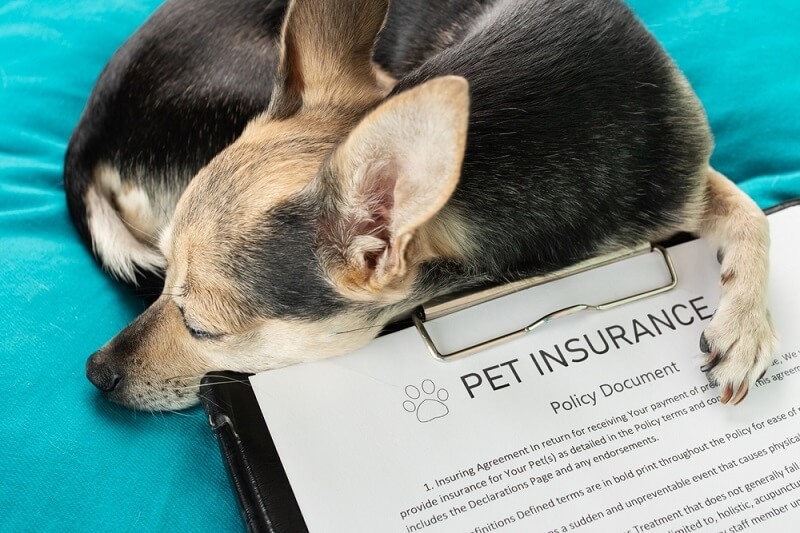
Our pets are not animals, but members of the family. Since our puppy days of play and our peaceful old age, we wish to provide them with the best of care. However, when some unforeseen illness or accident occurs, they stack up the bills related to the vet and pet parents will experience stress and worry. That is where pet insurance fits in, a smart and practical solution to insuring your furry friend and your wallet. This guide is divided into all the information about the fundamentals of pet insurance, such as its functioning, the coverage it gives, and the process of selecting the most appropriate plan to take with your pet.
Pet insurance is like human health insurance. It assists in the payment of medical expenses in case your pet falls ill or is hurt. With a monthly premium, you will be spared huge, unforeseen vet bills in the future. We can have a closer look at this and find out why it can actually be a lifesaver for pets and their owners.
You can purchase a pet insurance plan where you will be required to pay a regular payment to the insurance company, most often monthly or annually. In case your pet requires medical attention, you pay the vet bill first, and subsequently make a claim to your insurance provider. The insurance company will cover your expenses in a percentage depending on what you plan to do.
An example is that in case your dog eats something that it should not and requires an operation that would cost you 3000 dollars, you can only pay out of pocket 300-900 dollars after reimbursement. This can be a massive difference in the case of an abrupt emergency of the vet.
The cost of vets in the U.S is increasing annually. One emergency visit may cost between $800-2,000, and even the treatment of long-term diseases such as diabetes or arthritis may last years. Pet insurance provides comfort; it is like you can rest knowing that your pet is doing fine, rather than thinking about paying the bill.
Many pet parents think insurance is only for older pets or that it’s too expensive. In reality, starting insurance early—when your pet is young and healthy—is the best way to lock in lower rates. And when you compare it to the potential cost of emergency surgery or long-term medication, it’s often much more affordable than people think.

Not all pet insurance plans are the same. Different policies offer different levels of coverage, depending on your pet’s needs and your budget. Here’s a closer look at the main types of vet cost protection options available.
This is the most basic type of plan. It covers unexpected injuries, like broken bones, swallowed objects, or accidents. If your pet is young and generally healthy, this type of coverage might be enough to handle emergencies.
This is the most popular option for pet owners. It covers both accidents and illnesses—such as infections, allergies, and diseases like cancer. It’s a bit more expensive than accident-only plans but provides far more protection.
These plans include accident and illness coverage plus preventive care. That means vaccinations, flea prevention, dental cleanings, and annual exams might all be covered. This is ideal for pet parents who want all-around peace of mind and predictable yearly costs.
Some insurance companies offer wellness add-ons for routine checkups and preventive care. They might not be necessary for everyone, but if you visit the vet frequently, these can help offset costs.
Before signing up, it’s important to understand what pet policies cover—and what they don’t. Each company is different, so reading the fine print matters.
Most pet insurance policies cover:
Common exclusions include pre-existing conditions, breeding costs, cosmetic procedures, and preventive care (unless you add it). Always ask your insurer about what’s not included so you’re never caught off guard.
Finding the right plan can be overwhelming, but a little comparison goes a long way. Understanding how different companies structure their plans helps you make an informed choice.
Deductibles are the amount you pay before your insurance kicks in. A lower deductible means higher monthly premiums, while a higher deductible lowers your monthly cost. Most plans also offer reimbursement options between 70% and 90%.
Some plans limit how much they’ll pay in a year—anywhere from $5,000 to unlimited. If you have a breed prone to health issues or you want full peace of mind, choosing an unlimited plan is often worth it.
Numerous insurers provide the ability to customise your plan. To suit your age, budget and reimbursement benefits, the coverage limit, and deductibles, you have a variety of options to select.
The U.S. pet insurance market has expanded at a very high rate, and some of the largest pet insurance companies have come up with powerful and flexible plans. The following are some that are usually trusted by the pet parents.
Healthy Paws has a reputation for having a plain and simple policy that is free of hidden charges and offers accident and illness coverage. They provide lifetime unlimited benefits, which is perfect for pets that may have chronic conditions.
What is unique about Trupanion is the fact that it directly pays vets in certain situations, and you do not need to be reimbursed. It also reimburses hereditary and congenital conditions, which is not the case with many competitors.
Embrace provides bulky plans that include wellness incentives in preventive care. It fits well with those owners wishing to have a balance between affordability and extensive coverage.
ASPCA has plans supported by the American Society to Prevent Cruelty to Animals, and these plans are availed to most individuals and are simple to comprehend. They also have several pets on a single policy, and this is ideal in the case of multi-pet owners.
Nationwide is among the oldest brands in the industry and has been dealing with cats and dogs, and exotic pets such as birds and reptiles. They have one of the most comprehensive covers with their Whole Pet plan.
The knowledge of pet insurance fundamentals can actually transform your attitude towards caring about pets. Whether it is the selection of the appropriate policy or the understanding of how claims function, each and every step will help to make sure that your pet will receive the attention it deserves without making you spend out of your pocket. Browse and compare policies, as well as read the coverage of policies, and take time to research your vet cost protection. You will not only keep your wallet safe once you do- you will also provide your pet with a lifetime of safe and loving homes.
This content was created by AI